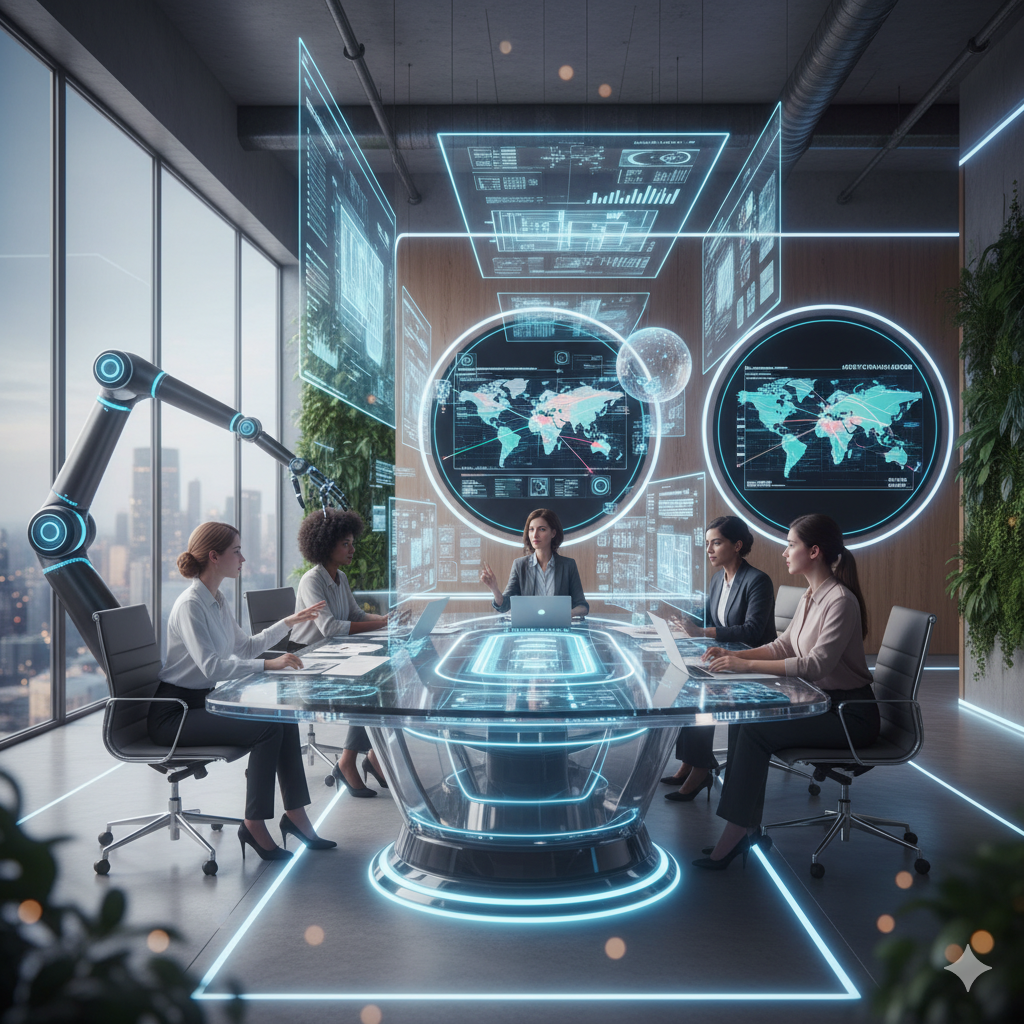
Workflows are changing faster than ever, and the biggest shift arriving in 2025 is driven by autonomous AI tools. These aren’t just smart assistants or simple automation bots—they are self-operating, decision-making systems capable of handling tasks, running processes, and optimizing operations without human supervision. Businesses across every industry are beginning to recognize that autonomous AI tools are more than a convenience. They are becoming the new backbone of productivity, reducing manual work, cutting delays, and helping teams move at a pace that traditional software simply cannot match.
As companies transition into a more digital-first environment, the question is no longer whether AI should be integrated. The real question is how much of your workflow can be handed over to autonomous AI tools. And in 2025, the answer is: much more than you think.
The Shift From Automation to Autonomy
Over the last decade, businesses embraced automation to reduce repetitive tasks. But traditional automation has limits—it still requires human setup, rules, monitoring, and intervention. What’s changing in 2025 is the introduction of true autonomy.
Autonomous AI tools can understand goals, analyze data, predict outcomes, and make decisions on their own. Instead of waiting for human input, they run processes end-to-end, adapting in real time. This shift means businesses are no longer simply automating tasks; they are automating thinking.
These systems can translate business goals into actionable workflows, continuously optimize them, and eliminate bottlenecks. The ability to think, decide, and act on their own is what makes autonomous AI tools the most transformative technology entering the workplace.
How Workflows Will Actually Change
The impact of autonomous AI isn’t theoretical. Organizations are already experiencing early versions of these tools, and in 2025, the effects will be much more visible. Workflows will shift in several powerful ways:
1. Teams Will Spend More Time on Strategy, Less on Execution
Most teams today spend the majority of their time doing tasks—updating lists, sending reports, checking statuses, verifying data, or following up with members. Autonomous AI tools can handle these operational tasks with precision, allowing teams to focus purely on strategy, creativity, and growth.
Instead of employees chasing work, AI will push work forward automatically.
2. Workflows Will Become Self-Improving
Traditional workflows need constant tuning. When something changes, someone must update rules, modify sequences, or adjust parameters. With autonomous AI tools, workflows become self-tuning. The system studies patterns, finds inefficiencies, and adjusts itself without human involvement.
This means faster execution, fewer errors, and an improvement cycle that never pauses.
3. Decision-Making Will Speed Up
Manual decision-making is slow because it relies on gathering data, analyzing it, and discussing the next steps. Autonomous AI tools can do this in seconds. They can interpret real-time data, detect anomalies, and deliver recommendations—or take action instantly.
Business decisions that used to take days will happen in minutes.
4. Personalization Will Become a Standard
When AI tools understand context, user behavior, purchase history, and communication patterns, they can personalize workflows for every customer or team member. This means personalized onboarding, tailored product suggestions, and customized follow-up sequences.
In 2025, personalization will no longer be a luxury—it will be expected.
5. Cross-Team Collaboration Will Become Seamless
Autonomous AI tools can link departments like never before. Instead of marketing, sales, support, and operations working in silos, AI can synchronize information in real time, ensuring that every team works with the same updated data.
This reduces friction, eliminates duplicate work, and keeps entire organizations aligned.
Industries That Will See the Fastest Transformation
Every industry will adopt autonomous AI tools at a different pace, but several sectors will feel the impact almost instantly:
Software development will accelerate with AI systems capable of generating code, running tests, fixing bugs, and deploying updates automatically.
E-commerce will use AI to manage inventory, update pricing, detect fraud, handle customer support, and personalize shopping experiences.
Finance and banking will rely on autonomous AI for risk detection, compliance, and real-time transaction monitoring.
Healthcare will use AI-assisted diagnostics, automated administrative tasks, and predictive patient management.
Marketing and sales will adopt AI systems that write copy, optimize campaigns, track lead behavior, and manage follow-up sequences automatically.
The versatility of autonomous AI tools makes them applicable everywhere. Any repetitive or data-heavy workflow becomes a perfect candidate for autonomy.
The New Role of Employees in an AI-Driven Workflow
One of the biggest misconceptions is that autonomous AI tools will replace humans. What actually happens is more nuanced: humans shift into higher-level roles. Instead of acting as task operators, employees become task orchestrators.
Their new responsibilities involve:
- guiding overall business strategy
- monitoring performance metrics
- improving creative direction
- setting objectives for AI systems
- handling complex or high-empathy situations
This balance of AI-led execution and human-led oversight creates a more efficient and human-centered workplace.
Why Businesses Cannot Ignore This Trend
The competitive advantage provided by autonomous AI tools is too significant to overlook. Companies that embrace this technology early will experience faster growth, smoother operations, and lower costs. Those that resist will face slowdowns, workforce strain, and outdated workflows.
Autonomy is no longer futuristic—it is becoming the standard.
Businesses that adopt autonomous AI tools will outperform competitors because they can move faster, adapt quickly, and scale without friction. In 2025, this adoption will shift from an option to a necessity.
The Future of Workflows Is Self-Running
The coming year represents a turning point for businesses worldwide. Workflows that once depended heavily on human intervention are becoming self-running systems powered by autonomous AI tools. Processes that used to require teams of people can now be managed by intelligent systems working round the clock.
This is not just an upgrade or a software improvement. It is a complete transformation of how work gets done.
Companies that understand this shift and start integrating autonomous AI tools today will be positioned not just to survive in 2025 but to lead. The future of business belongs to organizations with workflows that are fast, intelligent, and autonomous—workflows that move as quickly as the world around them.